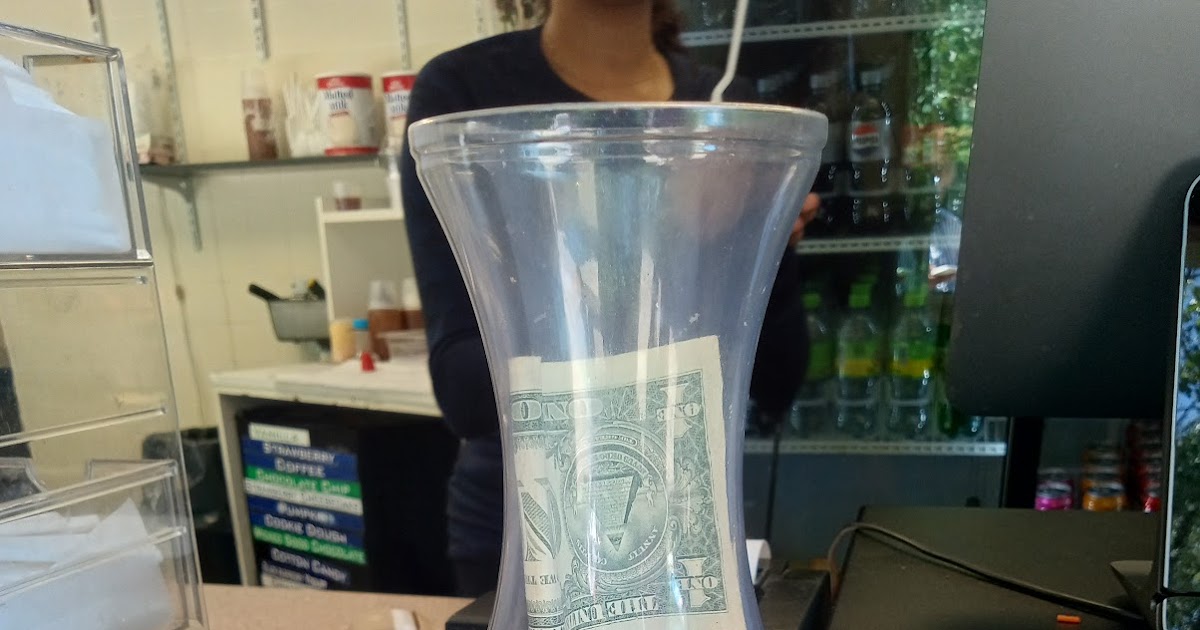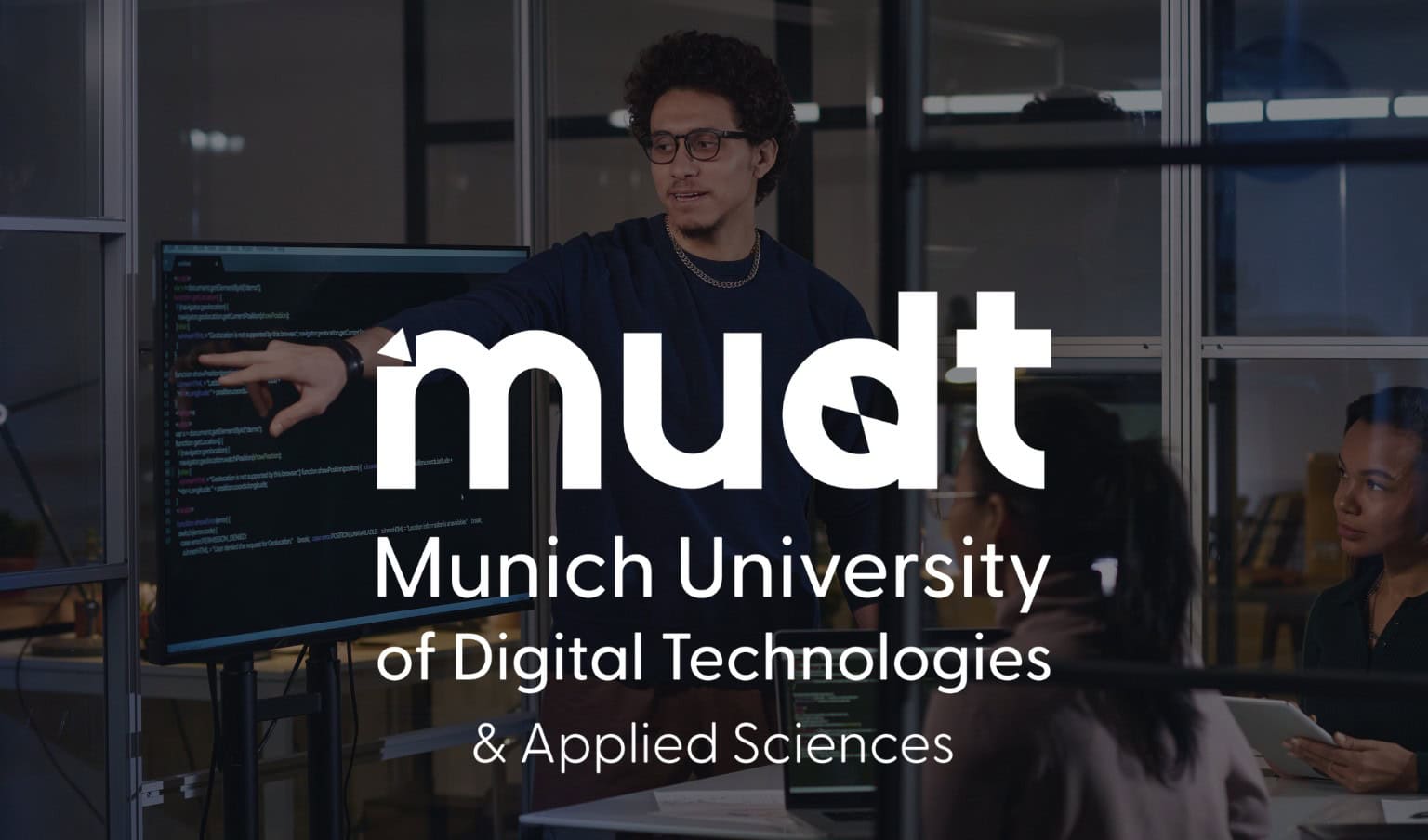

Imagine a fourth-grade classroom in which the teacher uses AI to generate a video of Ronald Reagan explaining his Cold War strategy. It’s history in living color, and the students lean in, captivated. Now imagine that same teacher facing thousands of dollars in damages under the proposed NO FAKES Act because the video looks too real.
That’s not sci-fi. It’s a risk baked into this bill. The NO FAKES Act, introduced this year in both the House and Senate, would create a new federal “digital replication right” letting people control the use of AI-generated versions of their voice or likeness. That means people can block others from sharing realistic, digitally created images of them. The right can extend for up to 70 years after the person’s death and is transferred to heirs. It also lets people sue those who share unauthorized “digital replicas,” as well as the companies that make such works possible.
A “digital replica” is defined as a newly created, highly realistic representation “readily identifiable” as a person’s voice or likeness. That includes fully virtual recreations and real images or recordings that are materially altered.
The bill bans unauthorized public use or distribution of “digital replicas.” But almost all of the covered “replicas” are fully protected by the First Amendment, meaning Congress cannot legislate their suppression.
What to do if a company makes a copy of your voice and profits from it without your permission.
The bill does list exceptions for “bona fide” news, documentaries, historical works, biographical works, commentary, scholarship, satire, or parody. But there’s a catch. News is exempt only if the replica is the subject of, or materially relevant to, the story. At best, this means any story relating to, say, political deepfakes must be reviewed by an attorney to decide if the story is “bona fide” news and the deepfake is sufficiently relevant to include in the story itself. At worst, this means politicians and other public figures will start suing journalists and others who talk about newsworthy replicas of them, if they don’t like what the person had to say.
Even worse, the documentary, historical, and biographical exceptions vanish if the work creates a false impression that it’s “an authentic [work] in which the person actually participated.” That swallows the exception and makes any realistic recreations, like the fourth-grade example above, legally radioactive.
The reach goes well beyond classrooms, too. Academics using recreated voices for research, documentarians patching gaps in archival footage, artists experimenting with digital media, or writers reenacting leaked authentic conversations could all face litigation. The exceptions are so narrowly drawn that they offer no real protection. And the risk doesn’t end with creators. Merely sharing a disputed clip can also invite a lawsuit.
That’s a digital heckler’s veto whereby one complaint can erase lawful speech.
The law also targets AI technology itself. Section 2(c)(2)(B) imposes liability on anyone who distributes a tool “primarily designed” to make digital replicas. That vague standard can easily ensnare open-source developers and small startups whose generative AI models sometimes output a voice or face that resembles a real person.
Then there’s the “notice-and-takedown” regime, modeled after the Digital Millennium Copyright Act. The bill requires online platforms to promptly remove or disable access to any alleged unauthorized “digital replica” once they receive a complaint, or risk losing legal immunity and facing penalties. In other words, platforms that don’t yank flagged content fast enough can be on the hook, which means they’ll likely delete first and ask questions never. That’s a digital heckler’s veto whereby one complaint can erase lawful speech.
On paper, the NO FAKES Act just looks like a safeguard against misleading and nonconsensual deepfakes. In practice, it would give politicians, celebrities, and other public figures new leverage over how they’re portrayed in today’s media, and grant their families enduring control over how they can be portrayed in history.
And let’s not forget that existing law already applies to digital replicas. Most states already recognize a right of publicity to police commercial uses of a person’s name, image, or likeness. Traditionally, that protection has been limited to overtly commercial contexts, such as advertising or merchandising. The NO FAKES Act breaks that guardrail, turning a narrow protection into a broad property right that threatens the First Amendment.
Creativity cannot thrive under constant permission. New mediums shouldn’t mean new muzzles.
AI-generated expression, like all expression, can also be punished when it crosses into unprotected categories such as fraud or defamation. Beyond those limits, government restrictions on creative tools risks strangling the diversity of ideas and free speech makes possible.
Creativity cannot thrive under a constant need for permission. New mediums shouldn’t mean new muzzles.

In today’s unpredictable higher education marketplace, TuitionFit, created by Mark Salisbury, offers something that colleges and universities have refused to provide—clear and honest information about what students actually pay. By gathering and anonymizing financial aid offers that students submit voluntarily, TuitionFit makes visible the hidden world of tuition discounting, where sticker prices are inflated but rarely reflect reality.
The statistics show just how broken and confusing the system has become. For the 2024–25 academic year, private nonprofit colleges awarded institutional grants that equaled 56.3 percent of the published sticker price for first-time, full-time undergraduates and 51.4 percent for all undergraduates. In other words, more than half of published tuition is an illusion. Despite average published tuition of $11,610 at public four-year in-state colleges and $43,350 at private nonprofit institutions, the real net tuition and fees that students pay is far lower. At public four-year schools, inflation-adjusted net tuition has fallen from $4,340 in 2012–13 to $2,480 in 2024–25, while net tuition at private nonprofits has gradually declined from $19,330 in 2006–07 to $16,510 in 2024–25. Families who see terrifying sticker prices often don’t realize that the average all-in, post-aid cost of a four-year degree is closer to $30,000.
These numbers also reveal deep inequities. At very selective private institutions in 2019–20, low-income students paid about $13,410 after aid, while wealthier peers often paid nearly $39,250. Such disparities are rarely explained by colleges themselves, who prefer to mask their discounting practices with vague averages and opaque award letters.
This is why TuitionFit is so important. Instead of navigating by distorted averages or marketing spin, students and families can see what peers with similar academic and financial profiles are actually paying. That knowledge provides leverage in negotiating aid offers and choosing institutions that will not leave them with crushing debt. In an era when sticker prices continue to climb while net prices quietly decline, TuitionFit brings clarity at the individual level.
The Higher Education Inquirer commends Salisbury and TuitionFit for providing a measure of transparency in a system that thrives on opacity. While it cannot by itself resolve the structural inequities of American higher education finance, it arms students and families with something they desperately need: the truth.

The promise of higher education as a pathway to opportunity has never been more important, or more precarious.
While overall university participation has reached record levels, this headline figure masks a troubling reality: where you’re born in England increasingly determines whether you’ll ever set foot on a university campus. And even once students do get their foot in the door, they might not have the support system in place – financially as well as academically – to succeed and thrive.
It is in this context that the UPP Foundation has today published the concluding paper in its widening participation inquiry. Mission Critical: six recommendations for the widening participation agenda is our attempt to fill in the gaps that the government left in its opportunity mission around widening participation, and to provide targets and mechanisms by which it can achieve success in this area.
For years, the biggest single aim of widening participation work has been “getting in” – ensuring that young people from disadvantaged backgrounds are supported to attend university, most often by undertaking a bachelor’s degree as a residential student. The aim of growing participation has come under political scrutiny in recent years and is no longer an accepted mission across the political spectrum.
But as our inquiry’s earlier papers highlight, there remains significant gaps in participation. Although more young people are going to university than ever before, there are stark disparities in the rates at which young people from different parts of the country attend university. If we believe, as I do, that talent is not simply concentrated in London and the South East, then by implication if opportunity is spread out more evenly, participation in higher education needs to grow.
That’s why our first recommendation is a “triple lock” widening participation target. This includes a gap of no more than ten percentage points between the highest and lowest regional HE participation rates; plus a 50 per cent floor for progression to HE at 18-19 across all regions; and a target for 70 per cent of the whole English population to have studied at level 4 or above by the age of 25, as advocated by Universities UK. Meeting these targets will ensure that “getting in” really is for everyone.
But this is not enough in isolation. The people we spoke to in Doncaster and Nottingham made it clear that “getting on” and “getting out” are equally important parts of the widening participation struggle – with the cost of learning a major barrier to full participation in university life.
With that in mind, we’re calling for the restoration of maintenance loans to 2021 real-terms levels by the end of the decade, as well as additional maintenance grants for those eligible for free school meals in the last six years.
We also want universities that are currently spending millions of pounds on bursaries and hardship funds to put that money towards outreach in the most challenging cold spots, as well as ensuring that the wider student experiences that undergrads cherish are available to all. That’s why it makes sense for a proportion of the proceeds from the proposed international student fee levy, if introduced, to be ring fenced to support an expanded access and participation plan regime, prioritising disadvantaged students from cold spot backgrounds.
Finally, widening participation needs to address the short-term mindset that grips young people both before and during their time at university.
Young people are more mindful of their finances than ever before, with many opting out of university in favour of a job in places where graduate careers are scarce and those who do choose to attend keeping one eye on their present and future earnings even before they’ve graduated.
If we are to revitalise the widening participation agenda, we have to bring employability to the fore, both by reconfiguring the Office for Students’ B3 metric on positive student outcomes and by bringing employers into the design and outputs of university study. There are already fantastic examples of this working in practice across the sector, such as at London South Bank’s energy advice centre and Bristol University’s career- and community-oriented dental school. It’s time for the sector to pick up these ideas and run with them.
The young person in Doncaster with the same grades and aspirations as their counterpart in Surrey faces not just different odds of getting to university, but different expectations about what’s possible. When we fail to address these disparities, we’re not just perpetuating inequality, we’re actively weakening the economic foundations that the whole country depends on.
What our new report offers is a chance to refocus the widening participation agenda around a series of ambitious but achievable targets. Getting in, getting on and getting out are all crucial parts of the higher education cycle, especially for those who otherwise wouldn’t attend. If the government want to take their widening participation priorities seriously, all three aspects need to take their place in the sun.

With eight years of experience at Ruffalo Noel Levitz working with more than 100 campuses across the country and following more than two decades leading enrollment efforts on campus, I know firsthand the challenges you face in enrollment. And in today’s environment it can feel like information overload on what you should be doing.
I recently hosted a webinar sharing insights from our 2025 Marketing and Recruiting Best Practices for Undergraduate Students study, where 114 institutions of all types completed our survey about their use and effectiveness of recruitment strategies. We covered everything from the fundamentals of outreach to the latest in AI-powered chatbots. In survey responses, we found a lot of shared experiences and opportunities for strategy enhancement. Specifically, we identified seven strategies that should form the foundation of your annual marketing and recruitment plan, as well as a few others we recommend incorporating to drive your recruitment to the next level.
In our survey, we asked about written marketing and recruitment plans. Only 29% of institutions have a fully implemented, data-driven plan. So if you’re among the 71% of institutions still working on creation of a full plan, you’re in good company—we’re all trying to navigate this evolving landscape. The encouraging part is you’re committed to improvement. We found that most institutions rate their plans as “good,” but you’re aiming for “excellent.” That drive to excel is what we’re here to support.
Through survey responses, we found some powerful strategies that are working for colleges right now. Virtually every institution that uses them rates personalized videos and video calls with students as effective, although fewer than half of you are using those outreach tactics. And implementing new AI-based digital assistants on your website will meet an expectation that students and families have to receive real-time answers to their questions 24/7 about application status, academic programs, and aid packages—but only 22% of institutions have taken this important step.
Search engine optimization (SEO) stood out as a leading strategy with 75% of institutions pursuing this and 100% of institutions rating it as effective. But we also know that most institutions don’t invest enough or broadly in SEO. Students are increasingly turning to search sites to find university sites and program information, and if you’re not in the top seven links, you’re effectively invisible. You need to incorporate into our annual plans ongoing SEO across your website to develop and maintain relevant content that speaks directly to student interest, both for traditional search engines and AI tools like ChatGPT and Gemini. You then need to track site traffic to measure ROI and so you know when it’s time to revisit those pages again. SEO is not a one-and-done process! Let’s make your website a powerful tool for student recruitment.
While the ongoing shift toward digital strategies can feel overwhelming, we’re here to support you every step of the way. We’ll help you find the right balance for your institution and your audience.

Life with a disability or chronic condition is inconsistent.
On good days, personal and professional obligations are met, and a reasonable, if not uninterruptedly good, quality of life is enjoyed – there is the mental and physical capacity to interact with others.
On bad days, the limitations suddenly imposed lead to frustration, and obligations narrowly met, if at all.
Interacting with others outside the immediate family is impossible, constituting a demand on personal resources which are fully deployed just trying to make it through the day.
As a disabled researcher, staying motivated while pursuing an academic course lasting for several years while at the whim of fluctuating health conditions can be a complex and often lonely process.
In my experience, trying to communicate this reality to colleagues and providers is met with compassion initially.
However, a more comprehensive response over time to the shifting sands of life with a disability is often lacking. This is redolent of how professionals react to change in the workplace, when it is introduced at a strategic level – when long-established processes and systems are in place, lip service is paid to new initiatives but in reality, says psychologist John Fisher:
…people maintain operating as they always have denying that there is any change at all.
When everyone says – and often mean – “Poor you”, but then carry on regardless, this does little to enhance motivation for the disabled colleague for whom being at the mercy of their condition is a real, and lasting, psychological drain.
So what can a higher education provider do to reduce this sense of being a burden, and bolster motivation for disabled students, researchers and colleagues?
David McClelland advances the theory that people are motivated by achievement (n-ach), by authority (n-pow) or by affiliation (n-affil) to varying degrees, and says the responsibility lies with the organisation to create the right conditions to motivate, arguing convincingly that:
…any behavioural outcome is a function of determinants in both the person and the environment.
This means that the responsibility rests with the organisation to provide optimum conditions for every individual to be motivated and to perform, and this is an on-going process – not a once-yearly day of “awareness” for a particular condition.
The 21st of March is World Down Syndrome Day, but does sending our children to school in odd socks really transform people’s thinking about the condition? Disability support should be a strategic, year-round priority which informs the culture of organisations – and shouldn’t higher education providers, as the ultimate symbols of knowledge and understanding in our society, be leading the way?
This is not to say that changing any organisation’s culture is a quick or an easy process. Noel Tichy and Stratford Sharman identify three crucial steps which must be followed by strategic leaders seeking transformation – “awakening; envisioning; re-architecturing”.
The awakening stage involves a crucial shift from complacency in the status quo, by creating a shared understanding that the establishment cannot and should not continue in its current incarnation and needs to evolve. In the case of disabled colleagues, this deep understanding of the changes needed can only be achieved in consultation with those who are experiencing – first-hand and over time – the issues with the working environment and the general approach towards disability support.
Making this a “whole organisation” approach to consultation can be an opportunity to promote understanding and integration between disabled and non-disabled colleagues; research has found this to be:
…particularly powerful in bringing about change as it removed the onus from the individual and avoided disabled people being singled out.
While many universities have initiatives and working groups to consult with, and support, disabled students, researchers and staff, the socio-political landscape within which we are all immersed is impossible to ignore.
The current toxic, divisive rhetoric about people claiming sickness and disability benefit, and how they are costing the hard-working taxpayer too much money, could not be further from the positive vision of whole-organisation consultation on disability support.
The cuts to benefits which were announced by the government last month have resulted in widespread alarm amongst the disabled community – Scope says they constitute “a catastrophe for disabled peoples’ living standards and independence”.
The recent statement by the Secretary of State for Work and Pensions that “taxpayers are paying millions more for the cost of failure” through “spending on working age sickness and disability” actively promotes resentment and social division between those who can work, and those who cannot.
Against this backdrop of blame and misinformation, it is difficult for those of us with disabilities to feel that we are not viewed by at least some individuals as burdensome and problematic. However, in the absence of a cultural shift coming into universities from society, perhaps university-led initiatives can begin to build cultures which will, over time, impact their local communities.
“Access Insights”, a project by Disabled Students UK, encapsulates this idea beautifully in their tagline, “We believe in the power of disability wisdom to better society”.
They recognise that disabled students have a deep understanding of how accessibility can be achieved in the university environment and offers institution-specific recommendations to universities who become Access Insight members. Using a evidence-based approach, they consult with disabled students to evaluate their experiences and pinpoint what is going well, as well as what needs to be improved.
In the same way, it is only via consultation with the disabled community and a shift in mindset away from “us and them” to “all of us together” that true accessibility in society can be achieved.
The higher education landscape has a responsibility to set the tone and the approach to disability awareness and support – the Access Insight model provides a blueprint for how organisations can begin to consult on, and take accountability for, their strengths and weaknesses in relation to disability support.
For me as a disabled student, I have a responsibility to speak up and show my university how they can make my course truly accessible; and my university has the responsibility to listen and to respond.
The question now is – can there be a wider impact for communities and society, if higher education providers demonstrate what truly inclusive environments could look like? The answer is out there for the taking – one conversation, one blog piece, at a time.

Technology is evolving faster than ever. AI is reshaping entire industries, cybersecurity threats grow more sophisticated by the day, and software engineering is no longer just about coding – it’s about solving real-world problems through innovation.
That’s why IT education must go beyond code and empower students to create real-world solutions that drive change.
For too long, many universities have relied on large lecture halls, theoretical coursework, and outdated curricula that struggle to keep pace with technological developments and industry needs. Meanwhile, employers are looking for graduates who think critically, adapt quickly, work hands-on and integrate the latest technology into reshaped businesses.
The Rise of hands-on IT education: active learning on real-world challenges with expert mentorship
Gen Z grew up with digital technology. They don’t just want to hear about AI, cybersecurity, and software engineering in a lecture – they want to learn actively, create, test, and innovate with it. The most forward-thinking IT programs today focus on:
The innovation imperative in IT education
Innovation isn’t just about new technology – it’s about curiosity and social networks. The world’s biggest breakthroughs come from those who know how to challenge the status quo, think creatively, leverage insights from other disciplines and turn own ideas into reality. Yet, many traditional IT programs still focus on passive learning, where students memorize theories instead of actively tackling and solving problems.
Gen Z grew up with digital technology. They don’t just want to hear about AI, cybersecurity, and software engineering in a lecture – they want to learn actively, create, test, and innovate with it
Tomorrow’s tech leaders need more than just knowledge – they need environments where they can experiment, fail, and iterate. That’s why forward-thinking universities are integrating IT meetups, startup incubators, and transdisciplinary collaboration into their ecosystem. Students don’t just work on assignments; they tackle real-world challenges alongside industry mentors.
These shifts are essential. The coming generation of IT professionals won’t just apply technology; they’ll redefine it.
The future of IT education: where innovation meets industry
The next wave of IT education also needs to prepare students to lead in a constantly changing field. This means more interdisciplinary programs where AI, cybersecurity, and software engineering overlap. It means moving beyond tests and grades to portfolios of real-world projects. By partnering with industry leaders, educational institutions ensure a relevant curriculum, aligned with real-world needs.
Universities that embrace this hands-on, innovation-driven approach will lead the way and shape the next generation of digital leaders.
A new kind of IT university
At the Munich University of Digital Technologies (MUDT), we are building an institution that embodies this future – where small classes, hands-on industry projects, and innovation-driven learning come together to create an unparalleled educational experience. Our students won’t just graduate with a degree; they’ll graduate with experience, connections, and the ability to turn ideas into impact.
The next era of IT education is here. The question is: Are you ready for it?
About the author: Univ. Prof. Prof.h.c. Dipl.-Ing. Dietmar Wiegand is the Rector of the Munich University of Digital Technologies (MUDT), where he leads the university’s strategic initiatives in advancing digital education. With extensive experience in engineering and management of IT projects, Prof. Wiegand has a strong academic and professional background, having led numerous research and development projects and academic initiatives. His expertise in fostering innovation and sustainability is central to MUDT’s mission to prepare the next generation of digital leaders in an evolving technological landscape.

Right now, improving access to educational opportunities for young people from disadvantaged backgrounds is high on the agenda of both universities and the UK government.
While Labour draws up plans to break the link between background and success, universities continue to invest significant time and resources into creating and implementing widening participation initiatives. If these efforts are to be successful, it’s vital that more young people are given access to tailored tutoring support during their time in compulsory education.
The advantage gap in achieving GCSE English and maths at age 16 is at its widest since 2011, with over half of pupils from disadvantaged backgrounds leaving school without these crucial qualifications. Missing these qualifications limits young people’s opportunities to progress in education. A 2021 study for the Nuffield Foundation primarily of the 2015 GCSE cohort found that young people who left school without GCSE English and maths are much less likely to study for a qualification higher than GCSE the following year, and even fewer pursue A levels.
The 16-19 attainment gap persists in post-16 education. On average, young people facing economic disadvantage are over three grades behind their peers across their best three subjects by the time they leave compulsory education. The gap is even wider for those in long term poverty, at almost four grades behind.
Tutoring has long been recognised as one of the most effective ways to boost attainment. Research by the Education Endowment Foundation suggests targeted tutoring leads to an average of five months additional progress when delivered one-to-one and four months additional progress when delivered in a small group.
Parents are aware of this benefit, with private tutoring becoming increasingly popular, according to the Sutton Trust. But low-income families are often priced out of accessing this kind of support should their child fall behind.
This unequal access is something that was addressed by The National Tutoring Programme and the 16-19 Tuition Fund – both government-funded tutoring schemes that ran in state schools and colleges between 2020–24. These programmes were created in response to the pandemic, to help young people catch up on lost learning. During the lifetimes of these programmes, the Sutton Trust examination of the tutoring landscape found that the gap in access to tuition between poorer and wealthier families in England all but disappeared.
A new report published this week from Public First – Past lessons, future vision: evolving state funded tutoring for the future – finds that schools and colleges have struggled to maintain tutoring beyond the end of the dedicated funding provided by these schemes. despite the strong evidence base for tutoring, its popularity among parents and government plans for tutoring to become a “permanent feature of the system” provided by these schemes.
The report compiles lessons learned from the National Tutoring Programme and the 16-19 Tuition Fund and uses these to create a blueprint for what the future of state-funded tutoring should look like. Based on interviews and focus groups with teachers, it reveals that many school leaders see relying on Pupil Premium funding to sustain tutoring as unrealistic. Schools face competing pressures on this funding, including the need to cover gaps in their core budgets.
Funding for tutoring programmes in colleges is even more limited. Unlike younger pupils, disadvantaged students in further education receive no equivalent to the Pupil Premium, despite still being in compulsory education. As a result, there is no dedicated funding for initiatives that could help bridge the attainment gap.
This is particularly troubling when you consider that young people in this phase have the shortest time left in compulsory education, and that the majority of students who resit their GCSEs in English and maths – subjects that are crucial for accessing higher level study – do so in FE colleges.
Tutoring programmes don’t just benefit the young people receiving much needed academic support, they also bring wider advantages to the higher education sector. By partnering with local schools and colleges to deliver tuition programmes, higher education institutions can take a leading role in advancing social mobility, delivering on their access and participation priorities, and strengthening ties with their local communities.
These programmes also create valuable job opportunities for undergraduate and postgraduate students. At Get Further – a charity that supports students from disadvantaged backgrounds to succeed in their GCSE resits through small-group tuition – 61 per cent of our tutors in 2023–24 were students: 23 per cent postgraduate and 38 per cent undergraduate.
When recruiting new tutors, we prioritise offering opportunities to students at our partner universities, providing them with comprehensive training and ongoing personal development. This enables them to build transferable skills in a paid role while making a meaningful contribution to widening participation, enriching both their own educational experience and that of the learners they support.
Similarly, the University of Exeter tutoring model has had success with its literacy programme for 12-13 year olds – a scheme delivered entirely by undergraduate tutors, who are either paid for their time or earn credits towards their degree. Programmes like these provide students with the opportunity to develop skills in communication, mentoring, adaptability, and critical thinking. This is all while taking on a flexible role that fits around their studies, supports their finances and makes a positive impact on their local communities.
Creating tutoring jobs for university students could also create a pipeline into teaching – a critically understaffed profession. In 2024, a survey of Get Further tutors revealed that 68 per cent of our tutor pool either were interested or might be interested in pursuing a career in teaching, and 67 per cent said that they were more likely to consider pursuing a career in teaching having tutored on our programme.
Investing in tutoring isn’t just about closing the attainment gap – it’s about expanding opportunity at every stage of education. By making high-quality tuition accessible to all young people, regardless of background, we can remove barriers to higher education while also creating valuable work experience for university students.
The Past lessons, future vision report sets out a clear blueprint for a sustainable, national tutoring programme. The evidence is compelling, the need is urgent, and the potential impact is transformative. The government must act to reinstate state funding so that this vital support remains available to those who need it most.
In the meantime, universities have a crucial role to play. By embedding tutoring within their widening participation efforts, they can not only support young people facing disadvantage but also strengthen ties with local colleges and schools, enhance student employability, and help shape a fairer, more ambitious education system.